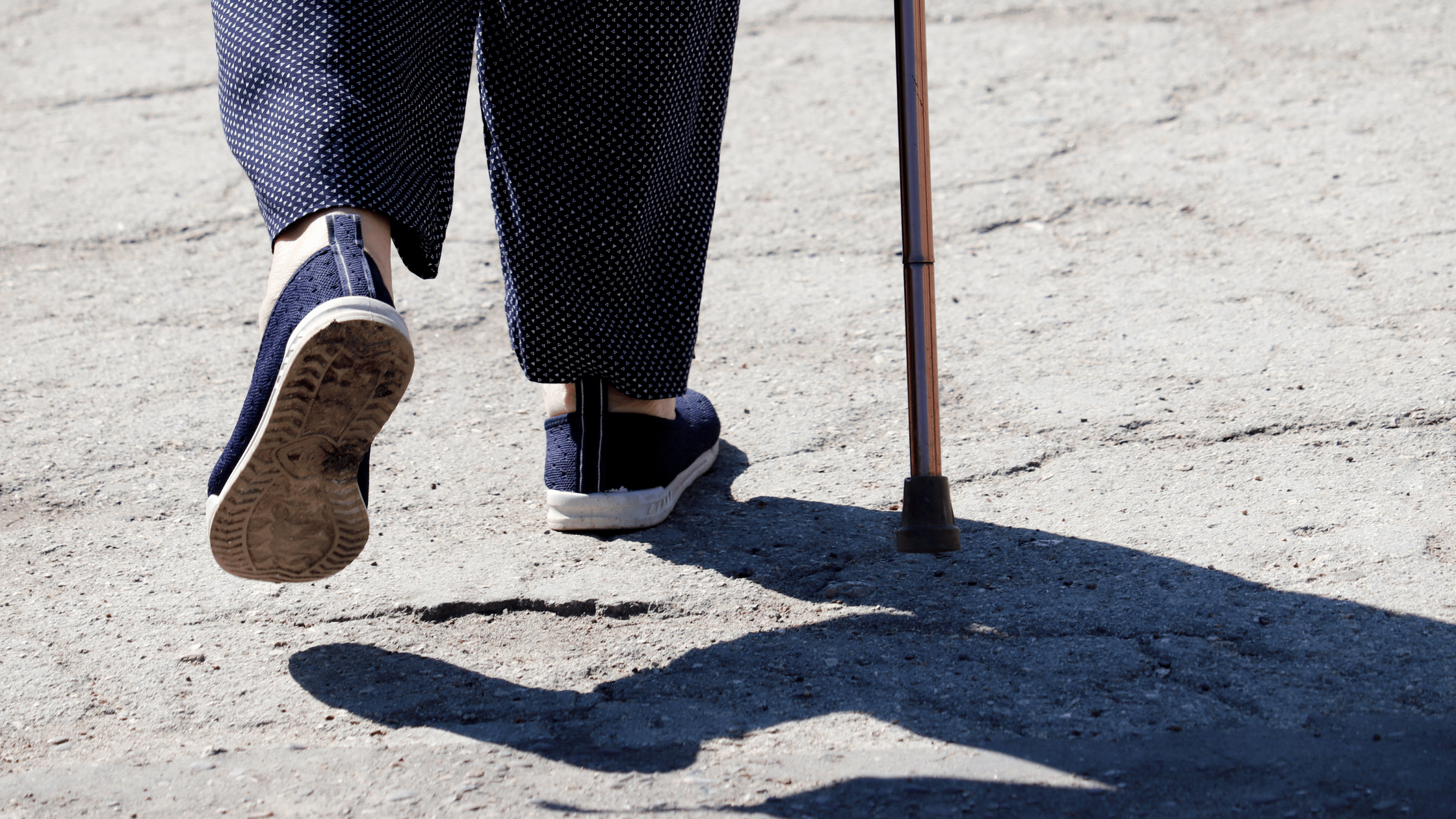Staying Active with a Limp: Adaptations, Causes, and the Role of Physical Therapy

Licensed Physical Therapist, PT, DPT // EW Pilates Instructor // EW Yoga Instructor // EW Balance Instructor // EW Motion Therapy Homewood
Living with a limp can pose unique challenges to staying active, but it doesn't mean you have to give up on leading a healthy and fulfilling lifestyle. Understanding the underlying causes of a limp, how to adapt your exercise routine, and the crucial role of physical therapy can empower you to stay active and maintain your well-being. This guide aims to provide you with the knowledge and tools needed to navigate the complexities of staying active with a limp, ensuring that you make well-informed decisions for your health.
Understanding the causes of a limp
A limp, characterized by an uneven gait or difficulty walking, can be attributed to a myriad of causes. These range from acute injuries that may heal over time to chronic conditions requiring ongoing management. Here, we delve deeper into the specific causes and shed light on their implications for mobility and daily activities.
Acute injuries: temporary impediments
Sprains and strains
Sprains involve overstretching or tearing ligaments—the tough bands of fibrous tissue that connect two bones together in joints. Ankle sprains are particularly common and can cause a limp due to their pain and instability. Strains, on the other hand, affect muscles or tendons, which attach muscles to bones. A strained calf muscle, for example, can make it difficult to walk without limping.
Fractures
Bone fractures, ranging from hairline cracks to complete breaks, can significantly impact one's walking ability. Lower limb fractures, such as those in the foot, ankle, leg, or hip, are directly linked to limping. The severity of the limp depends on the location and severity of the fracture, with some requiring immobilization or surgery to heal correctly.
Chronic conditions: ongoing challenges
Arthritis
Arthritis encompasses a group of conditions characterized by joint inflammation, leading to pain and stiffness that worsen with age. Osteoarthritis, resulting from wear and tear, commonly affects the knees and hips and directly impacts gait. Rheumatoid arthritis, an autoimmune disorder, can cause limping due to joint damage and pain.
Hip dysplasia
Hip dysplasia occurs when the hip socket doesn't fully cover the ball portion of the upper thigh bone, leading to an increased risk of joint dislocation. Present from birth or developing in early life, hip dysplasia can result in a limp, especially as it progresses, and leads to arthritis or discomfort in the hip joint.
Neurological disorders
Conditions affecting the nervous system, such as cerebral palsy, stroke, Parkinson’s disease, or multiple sclerosis, can cause limping due to muscle weakness, spasticity, or coordination problems. The nature of the limp often varies, reflecting the specific neurological challenges each faces.
Infections and inflammatory conditions
Osteomyelitis
This is an infection of the bone, potentially caused by bacteria or fungi. The infection can lead to significant pain and swelling in the affected area, often resulting in a limp due to the discomfort and inability to bear weight on the affected limb.
Septic arthritis
This condition involves infection in a joint, leading to severe pain, swelling, and redness. Septic arthritis can cause a sudden onset of limping as moving the affected joint becomes excruciatingly painful.
These conditions can significantly impact an individual's mobility and quality of life. Acute injuries typically require a period of rest and rehabilitation to restore strength and flexibility, often leading to a temporary limp that improves with time. Chronic conditions, however, may necessitate ongoing management strategies, including medication, lifestyle adjustments, and, in some cases, surgery.
Understanding the specific cause of a limp is crucial for determining the most effective treatment plan. It is essential to consult healthcare professionals for a proper diagnosis and tailored approach to management. By addressing the underlying cause and adopting appropriate interventions, individuals can optimize their mobility and minimize the impact of a limp on their daily activities.
Adapting your routine: stay active safely
Adapting your exercise routine to accommodate a limp is crucial for preventing further injury and staying as active as possible. Here are some strategies to consider:
Low-impact exercises
Incorporate low-impact exercises into your routine, such as swimming, cycling, or low-impact strength training. These activities allow you to stay active and build strength without straining your limbs excessively.
Walking is often cited as one of the best low-impact exercises, but it can become more risky when you have a limp. Walking improperly or excessively can strain the affected limb, potentially leading to increased pain, delayed healing, or further injury. Therefore, understanding your body's limits and the nature of your condition is essential.
Before increasing your walking activity, consult a healthcare provider or physical therapist. They can assess your condition and recommend a tailored walking plan, possibly incorporating supportive devices like braces or orthotics to improve your gait and reduce discomfort. Begin with short, slow walks, paying close attention to how your body responds. If you experience pain (beyond mild discomfort) or if your limp worsens, it's a signal to stop and rest. Gradually increase your walking duration and intensity based on your comfort and improvement.
When walking with a limp, it is critical to wear supportive and comfortable shoes. Footwear that provides proper cushioning and stability can help distribute weight evenly, reducing the stress on the affected limb. For some, using assistive devices like a cane, walker, or crutches can facilitate walking by providing additional support and improving balance. These devices can help you maintain an active lifestyle while minimizing the risk of further injury.
Flexibility and strengthening
Regular stretching and flexibility exercises maintain joint health and prevent stiffness. Target exercises designed to strengthen the muscles around the affected area and improve flexibility can help you walk with a limp more comfortably. A physical therapist can recommend specific exercises tailored to your condition. Additionally, yoga and Pilates can be particularly beneficial for enhancing flexibility and core strength, improving balance, and reducing the risk of falls.
How physical therapy can help manage a limp
Physical therapy plays a pivotal role in helping individuals with a limp to stay active and manage their symptoms effectively. A personalized physical therapy program can offer numerous benefits:
Personalized care and rehabilitation plans
Physical therapists can develop customized rehabilitation plans based on your condition and goals. These plans often include strength training, flexibility exercises, and techniques to improve gait and balance. Fall risk is often a concern among patients with a limp, and your physical therapist can modify daily activities to help promote independence. Your physical therapist can also recommend assistive devices that may help decrease the limp.
Pain management and recovery support
Physical therapy offers strategies for pain management, including manual therapy, modalities like heat or ice, and exercises to strengthen the muscles supporting the affected limb. These interventions can accelerate recovery and enhance overall well-being.
A holistic approach to navigating a limp
Staying active with a limp requires a holistic approach that encompasses physical, emotional, and lifestyle considerations. Here are some additional tips to support your journey:
- Listen to your body: Pay attention to your body's signals and adjust your activities accordingly. Avoid pushing through pain, as this can lead to further injury. Rest when necessary and gradually increase your activity level as your condition improves.
- Seek support: Don't hesitate to seek support from healthcare professionals, friends, and family. Joining a support group for individuals with similar conditions can also provide valuable insights and encouragement.
- Embrace adaptability: Being flexible and willing to adapt your activities and goals can help you stay active and engaged despite the challenges of living with a limp. Explore new hobbies and interests that are accessible and enjoyable.
Living with a limp can present challenges, but it doesn't have to limit your ability to stay active and enjoy a fulfilling life. You can navigate these challenges successfully by understanding the causes of your condition, adapting your routine, and leveraging the expertise of physical therapy professionals. Remember, each step taken towards adaptation and rehabilitation is a step towards maintaining your health and well-being. We consider it a privilege to help our clients at EW Motion Therapy stay active even when dealing with physical limitations - our team thrives while creating individualized care plans. If you are curious about how much physical therapy might cost, click the button below to download our free pricing guide.


